This article was medically reviewed by Luba Lee, FNP-BC, MS. Luba Lee, FNP-BC is a Board-Certified Family Nurse Practitioner (FNP) and educator in Tennessee with over a decade of clinical experience. Luba has certifications in Pediatric Advanced Life Support (PALS), Emergency Medicine, Advanced Cardiac Life Support (ACLS), Team Building, and Critical Care Nursing. She received her Master of Science in Nursing (MSN) from the University of Tennessee in 2006.
This article has been viewed 186,646 times.
Whether you have a bruised toe or toenail due to a sports accident, running or jogging, or a blunt-force injury to your toe, there are ways you can help the healing process. Treat swelling and pain in the first few days after the injury. Use natural remedies and other techniques to promote healing and prevent infection, especially if you have a bruise underneath a toenail. If the toe doesn’t seem to be getting better after a couple of weeks, visit a doctor to have it examined. Most bruised toes, even broken ones, will completely heal in no longer than 4-6 weeks, depending on the severity of the injury.
Things You Should Know
- Ice the bruise as soon as possible and keep your foot elevated to reduce swelling and discoloration. Take acetaminophen for pain if needed.
- Limit your physical activity and try saline solution soaks, warm compresses, or remedies like arnica ointment or turmeric paste to speed up healing.
- Keep your toenail trimmed short if there’s a bruise underneath to prevent further injury and irritation.
Steps
Treating Pain and Swelling
-
1Apply ice to the bruise as soon as possible. Put an ice pack on your toe for 10 minutes at a time on the same day you get a bruise. Take it off after 10 minutes and reapply it after 20 minutes of rest. This will reduce swelling and constrict the broken blood vessels, so the bruise won’t spread as much.[1]
- If you don’t have an ice pack, you can use a bag of frozen vegetables wrapped in a clean towel or a clean cloth soaked in ice water.
- Another option is to soak your toe and foot in a bucket filled with ice-cold water.
Tip: Most bruises will fade and heal on their own in 2-3 weeks. Keep an eye on your bruised toe and see a doctor if a bruised toe or toenail doesn’t fade or gets worse after that amount of time.
-
2Elevate the toe to reduce blood flow to it. Sit or lie down somewhere where you can put your foot up on something to elevate it above the level of your heart. This will reduce pressure to the bruised area and limit discoloration.[2]
- For example, you could lie down on a couch and prop your foot up with a couple of cushions or pillows to elevate the bruised toe above heart level.
Advertisement -
3Avoid heating up the bruise for 2-3 days. Extreme heat will cause more swelling of the bruised area. Don’t take any particularly hot showers or baths or use warm compresses for the first 2-3 days after you bruise your toe.[3]
- If you injured your toenail and it was bleeding in addition to getting a bruise underneath, heat can also cause more bleeding.
-
4Take acetaminophen if you need any pain relief. Other types of painkillers like ibuprofen or aspirin can interfere with blood clotting. Take a painkiller that contains only acetaminophen to avoid interfering with the healing of the bruise.[4]
- Painkillers that contain acetaminophen are Tylenol and Excedrin, for example.
-
5Tape the injured toe to the toe next to it to keep it stable. Put a small cotton ball between the 2 toes, then wrap masking tape or medical tape around them to keep your injured toe stable. Change the cotton and tape every day until the swelling goes down.[5]
- The cotton ball will help absorb moisture between the toes while they are taped together.
Speeding up the Healing Process
-
1Limit physical activity and pressure on the toe in the days after the injury. Avoid any athletic activity until the bruise starts to fade. Try to avoid putting any strain on it by walking or standing for long periods of time.[6]
- You can return to regular amounts of walking and physical activity when the swelling is gone.
- Avoid wearing tight shoes while the toe is healing to keep pressure off it as well. You can wear shoes that are a little too big for you or just loosen the laces of a comfortable pair of shoes and don’t tighten them all the way.
-
2Apply warm compresses to the bruise after 2-3 days. Warm compresses help open up healthy blood vessels and increase blood flow to promote healing. Put a warm compress on the toe 3 times a day for 15 minutes at a time.[7]
- A warm compress is a way to apply heat to part of your body. This can be done many ways, for example, with warm water, microwaveable pads, hot water bottles, or electric heating pads.
-
3Rub a natural remedy, ointment, or oil on the bruise to help with healing. Apply a small amount of arnica ointment, crushed parsley leaves, St. John’s Wort oil, mustard oil, turmeric paste, or vitamin K cream to the bruise 2-3 times a day. These are natural substances that work to reduce inflammation and swelling, promote circulation, and help the bruise heal faster.[8]
- These types of remedies, ointments, and oils can be applied to both bruises on the skin of your toe and bruised toenails.
- Arnica may even help to speed up healing time.[9]
-
4Soak your foot in a saline solution daily to prevent infection of a bruised toenail. Mix a spoonful of any salt you have around the house into a cup of warm water. Soak your foot in it 3 times a day for about 10 minutes each time to prevent infection if you have a bruise under your toenail.[10]
- This is not necessary if the bruise is just on the skin of your toe and not under your toenail. Bruised toenails often have a wound underneath as well, so it’s important to keep them clean.
-
5Trim your toenail short if you have a bruise underneath your nail. Keep your toenail cut short while the bruise heals to speed up the process. This will also help prevent further injury and irritation.[11]
- If you trim your toenail flat instead of round, it will also help prevent against an ingrown toenail.
Warning: Toenails are particularly susceptible to fungal infections after an injury. Keep an eye on your nail and visit a doctor if you notice it start to separate from the skin underneath or it becomes discolored after the bruise underneath heals.
-
6Increase your vitamin C and vitamin K intake. Vitamin C and vitamin K both make you less susceptible to bruising and help bruises heal faster. Get more vitamin C by eating citrus fruits and peppers and get more vitamin K by eating vegetables like broccoli and leafy greens.[12]
- You can also get more vitamins by taking a multivitamin or supplement every day.
- Flavonoids also help vitamin C work better in your body. You can get flavonoids from carrots, citrus fruits, and apricots.
-
7See a doctor if the bruised toe doesn’t seem to be healing after 2 weeks. Pain and swelling usually subsides after a few days or a week and bruising usually doesn’t last any longer than 2 weeks. Visit a doctor if these symptoms last longer and healing seems to be going slower than normal.[13]
- Even broken toes can heal on their own at home with the proper care. However, if your toe looks crooked after the injury it’s a good idea to visit a doctor to make sure it doesn’t need to be straightened to heal properly.
- If you experience sudden numbness, tingling, or an increase in pain or swelling while the toe is healing during the first 2 weeks, visit a doctor as well.
Warnings
- See a doctor if your bruised toe doesn’t fade or gets worse after 2-3 weeks.⧼thumbs_response⧽
- Avoid painkillers like ibuprofen and aspirin when you want to heal a bruised toe fast.⧼thumbs_response⧽
- Don’t smoke if you want a bruised toe to heal fast. Cigarettes slow down the healing process.⧼thumbs_response⧽
- Injured toenails are prone to fungal infections, so make sure to take extra care if you have a bruise underneath a nail to prevent infections.⧼thumbs_response⧽
References
- ↑ https://www.besthealthmag.ca/best-you/home-remedies/heal-bruises-naturally/
- ↑ https://www.chicagotribune.com/lifestyles/health/sns-health-treating-bruises-story.html
- ↑ https://www.chicagotribune.com/lifestyles/health/sns-health-treating-bruises-story.html
- ↑ https://www.chicagotribune.com/lifestyles/health/sns-health-treating-bruises-story.html
- ↑ https://medlineplus.gov/ency/patientinstructions/000520.htm
- ↑ https://medlineplus.gov/ency/patientinstructions/000520.htm
- ↑ https://www.chicagotribune.com/lifestyles/health/sns-health-treating-bruises-story.html
- ↑ https://www.besthealthmag.ca/best-you/home-remedies/heal-bruises-naturally/
- ↑ https://www.ncbi.nlm.nih.gov/pubmed/20412090

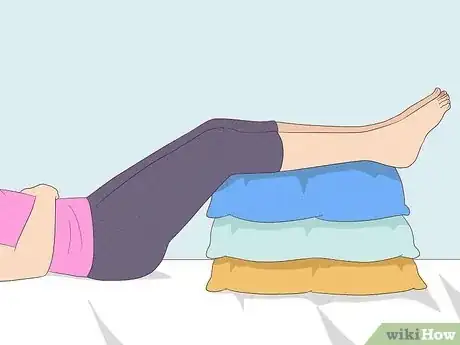
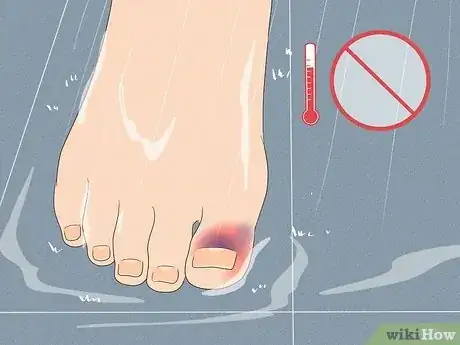
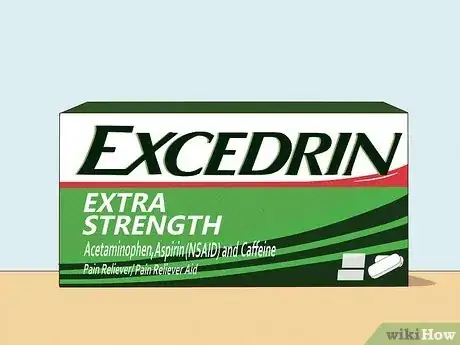
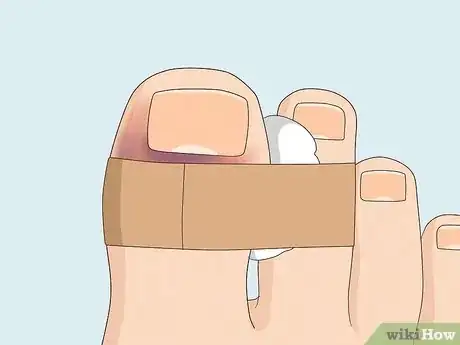
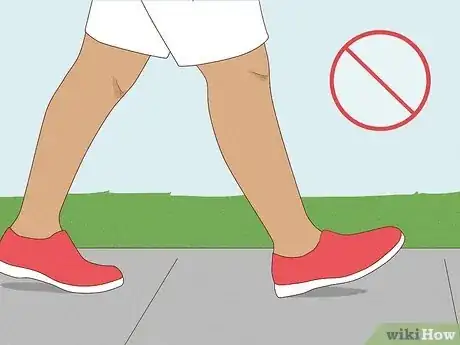
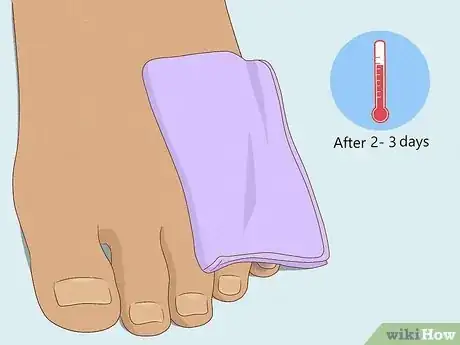
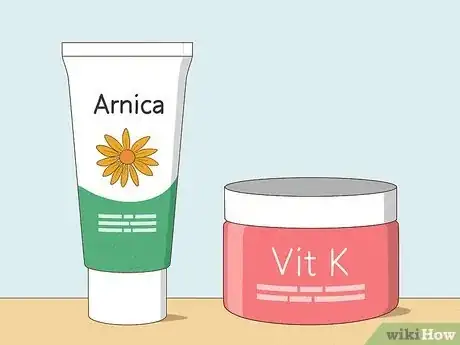
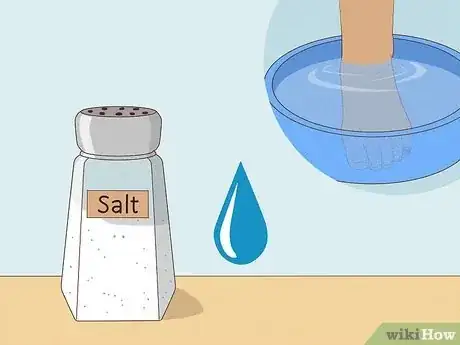
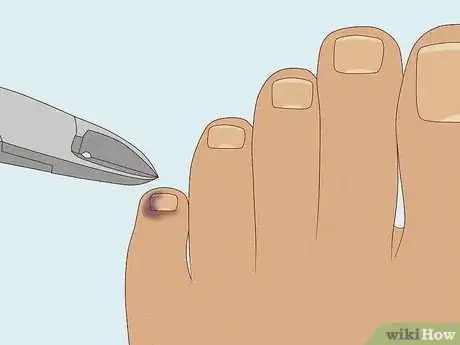

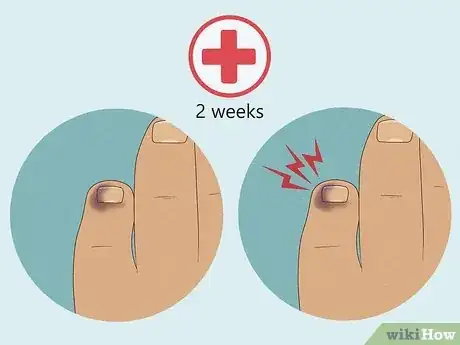
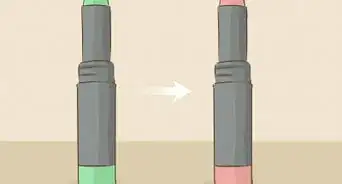
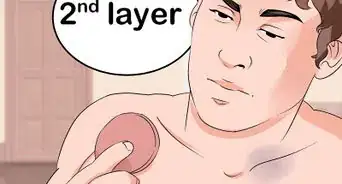
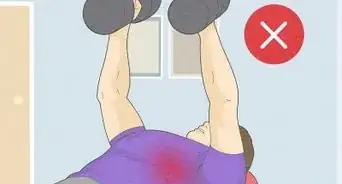


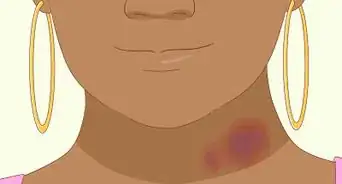
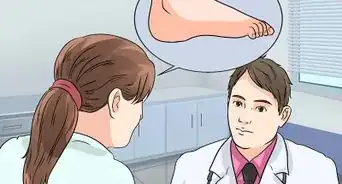
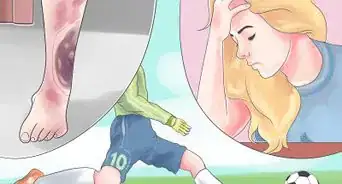
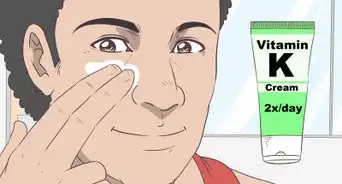
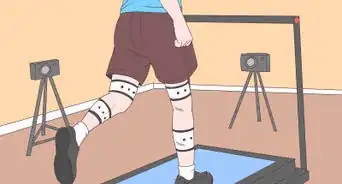
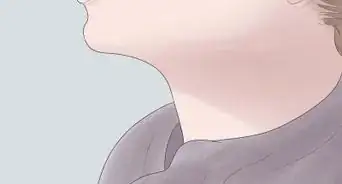
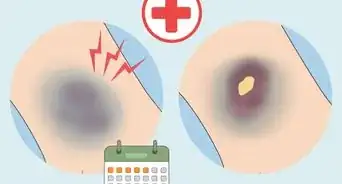
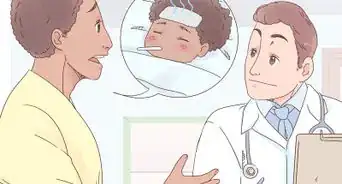
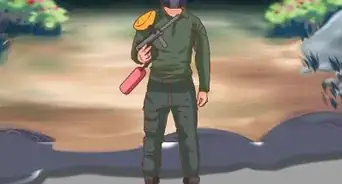







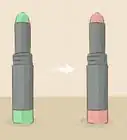

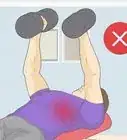




































Medical Disclaimer
The content of this article is not intended to be a substitute for professional medical advice, examination, diagnosis, or treatment. You should always contact your doctor or other qualified healthcare professional before starting, changing, or stopping any kind of health treatment.
Read More...